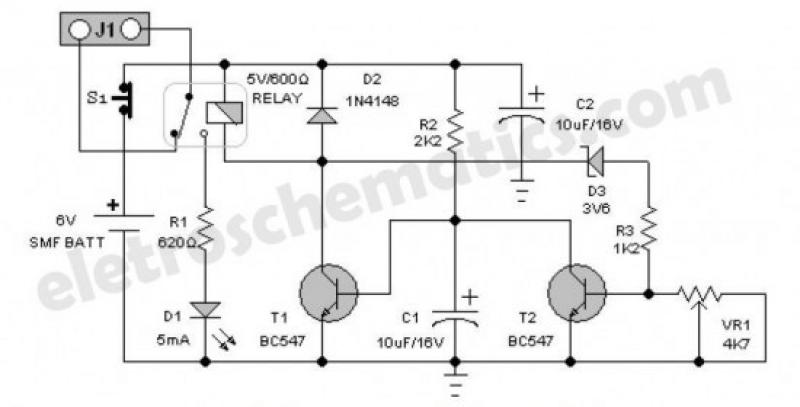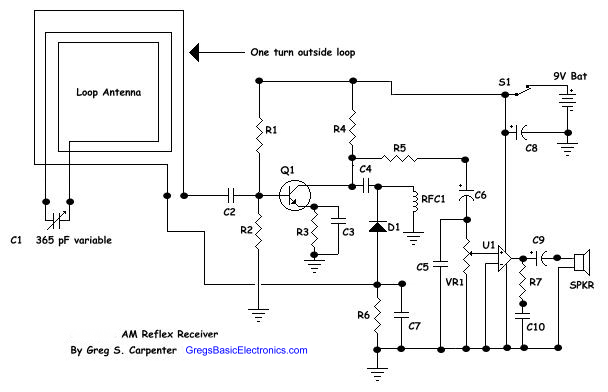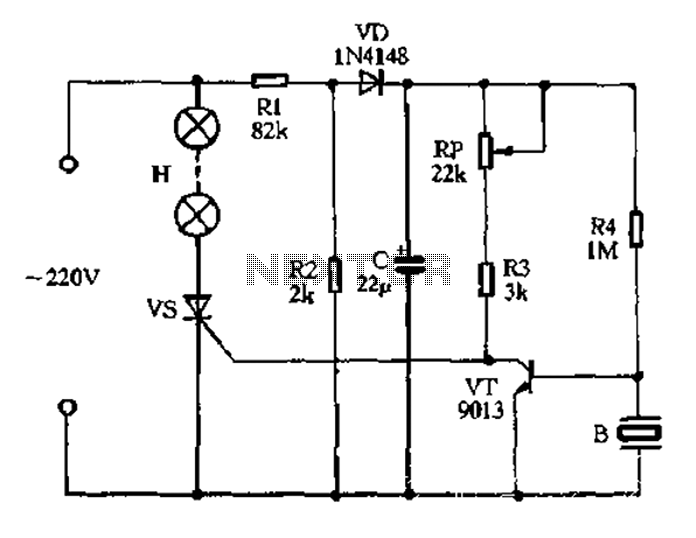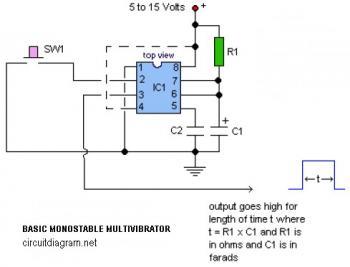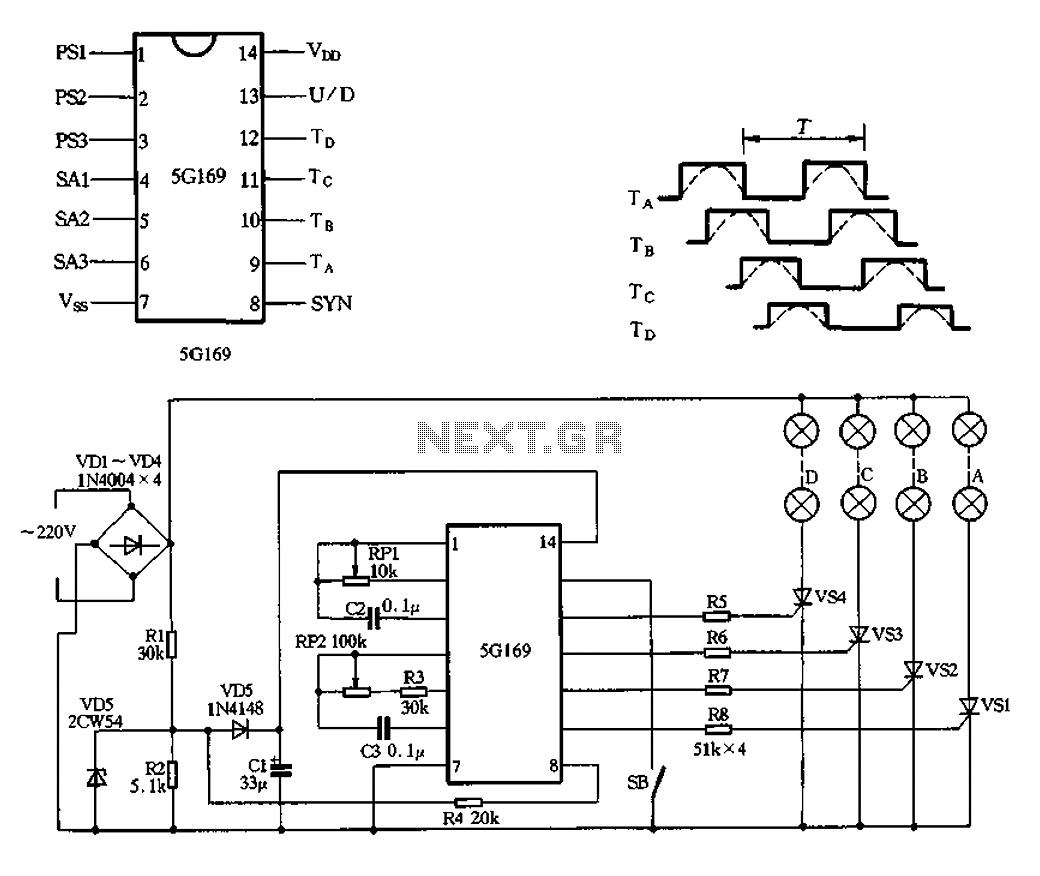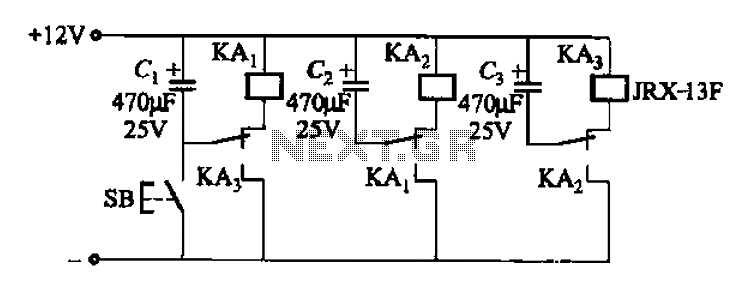
CS9482 holiday lights ASIC
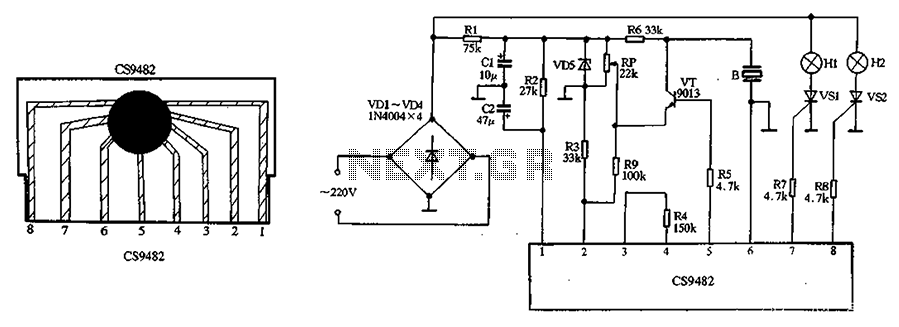
The CS9482 integrated circuit fabrication is demonstrated with a holiday lights circuit. The CS9482 chip includes a 4.1V voltage regulator circuit; therefore, while the external circuit does not need to be regulated, if the voltage exceeds 4V, a current-limiting resistor (R2) should be added. A VT manifold is used to amplify the music signal output to drive the piezoelectric ceramic sheet (B) for sound production. The electrical locator (VD5) is crucial for adjusting the operating voltage of the transistor (VT) and should not be omitted. Once powered, the lantern strings (H1, H2) will flash, while the piezoelectric ceramic chip (B) plays electronic music.
The CS9482 integrated circuit is a versatile component designed for applications such as decorative lighting and sound generation, particularly suitable for holiday displays. The integrated voltage regulator within the CS9482 ensures stable operation at 4.1V, which is critical for maintaining consistent performance of the circuit. However, when integrating additional components that may exceed this voltage threshold, it is essential to incorporate a current-limiting resistor (R2) to prevent damage to the circuit and ensure safe operation.
The VT manifold serves a dual purpose in this configuration; it not only amplifies the audio signal but also facilitates the driving of a piezoelectric ceramic sheet (B). This component is responsible for converting electrical signals into audible sound, enhancing the overall experience of the holiday lights display by synchronizing light patterns with music.
The electrical locator (VD5) plays a pivotal role in the circuit by allowing for fine-tuning of the transistor (VT) operating voltage. This adjustment is critical for optimizing performance and ensuring that the transistor operates within its specified parameters. Omitting this component could lead to suboptimal performance or even circuit failure.
The operational dynamics of the circuit are such that once the power is applied, the lantern strings (H1, H2) will exhibit a flashing light pattern, creating a visually appealing effect. Simultaneously, the piezoelectric ceramic chip (B) will produce electronic music, contributing to the festive atmosphere. The combination of light and sound in this circuit exemplifies the integration of electronic components to create an engaging and interactive experience. CS9482 integrated circuit fabrication with holiday lights circuit shown in Figure 2-37. Since the CS9482 chip already has 4.1V voltage regulator circuit, the external circuit m ay not necessarily be so regulated, but the voltage exceeds 4V, the external circuit should be added to the current limiting resistor R2. VT Manifold 5 feet for amplifying the output of the music signal to drive the piezoelectric ceramic sheet B sound.
FIG regulator VD5 electrical locator RP is mainly used to adjust the operating voltage of the transistor VT, VD5 can not be omitted. After the circuit is powered, lantern string HI, H2 can flashing light, while the piezoelectric ceramic chip B also plays electronic music within the reservoir.
The CS9482 integrated circuit is a versatile component designed for applications such as decorative lighting and sound generation, particularly suitable for holiday displays. The integrated voltage regulator within the CS9482 ensures stable operation at 4.1V, which is critical for maintaining consistent performance of the circuit. However, when integrating additional components that may exceed this voltage threshold, it is essential to incorporate a current-limiting resistor (R2) to prevent damage to the circuit and ensure safe operation.
The VT manifold serves a dual purpose in this configuration; it not only amplifies the audio signal but also facilitates the driving of a piezoelectric ceramic sheet (B). This component is responsible for converting electrical signals into audible sound, enhancing the overall experience of the holiday lights display by synchronizing light patterns with music.
The electrical locator (VD5) plays a pivotal role in the circuit by allowing for fine-tuning of the transistor (VT) operating voltage. This adjustment is critical for optimizing performance and ensuring that the transistor operates within its specified parameters. Omitting this component could lead to suboptimal performance or even circuit failure.
The operational dynamics of the circuit are such that once the power is applied, the lantern strings (H1, H2) will exhibit a flashing light pattern, creating a visually appealing effect. Simultaneously, the piezoelectric ceramic chip (B) will produce electronic music, contributing to the festive atmosphere. The combination of light and sound in this circuit exemplifies the integration of electronic components to create an engaging and interactive experience. CS9482 integrated circuit fabrication with holiday lights circuit shown in Figure 2-37. Since the CS9482 chip already has 4.1V voltage regulator circuit, the external circuit m ay not necessarily be so regulated, but the voltage exceeds 4V, the external circuit should be added to the current limiting resistor R2. VT Manifold 5 feet for amplifying the output of the music signal to drive the piezoelectric ceramic sheet B sound.
FIG regulator VD5 electrical locator RP is mainly used to adjust the operating voltage of the transistor VT, VD5 can not be omitted. After the circuit is powered, lantern string HI, H2 can flashing light, while the piezoelectric ceramic chip B also plays electronic music within the reservoir.
